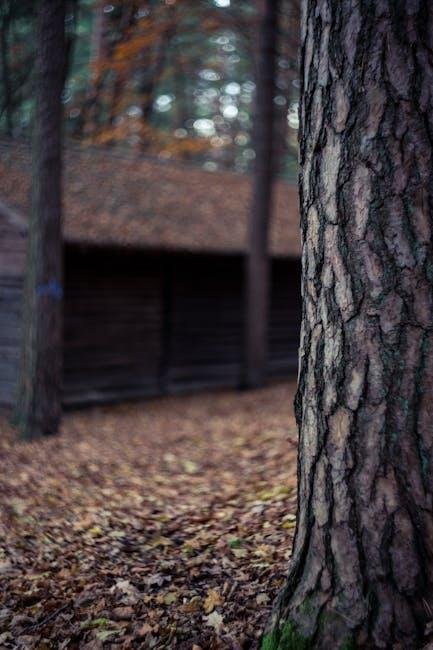In a world that often feels overwhelming, where the demands of daily life can overshadow our sense of peace, many are seeking solace in the embrace of nature. Enter nature therapy—a gentle antidote to the pervasive anxiety that can grip our minds and hearts. Imagine stepping outside into a tapestry of rustling leaves, fragrant blooms, and the invigorating sound of birdsong. This article delves into the profound benefits of walking outdoors,exploring how these simple moments spent in green spaces can definitely help mitigate stress and nurture mental well-being. As we navigate the paths of our lives, we may find that the answers we seek lie not in silence, but in the symphony of the natural world, where each step can lead us toward tranquility and self-discovery. Join us on this journey through the healing power of nature, and discover how a stroll outside might just be the key to reducing anxiety.
Embracing the Great Outdoors for Mental Clarity
Stepping outside into nature can be a subtle yet profound shift in outlook. The fresh air, rustling leaves, and distant sounds of wildlife create a sensory environment that can wash away the worries weighing on your mind. As you walk, your body produces serotonin, a neurotransmitter that naturally promotes feelings of happiness and well-being. This holistic combination transforms a simple stroll into an opportunity for mental rejuvenation. Engaging with your surroundings allows you to practice mindfulness, encouraging you to become acutely aware of the present moment—an antidote to the spiraling thoughts often experienced with anxiety.
Consider the following benefits of spending time outdoors:
- Improved Mood: Natural light can enhance serotonin production, making us feel more upbeat.
- Increased Creativity: A change in scenery can inspire new ideas and perspectives.
- Enhanced Focus: Being in nature helps to alleviate mental fatigue,sharpening concentration.
- Deepened Connection: Walking in green spaces fosters a sense of belonging and interconnectedness.
| activity | Time to Rejuvenate |
|---|---|
| Nature Walk | 30-60 minutes |
| Gardening | 60+ minutes |
| Birdwatching | 1-2 hours |

The Science Behind Nature’s Calming Influence
Research shows that immersing ourselves in natural environments has profound effects on our mental health. When we walk outdoors, our bodies respond to the sights, sounds, and smells of nature, which can trigger a series of physiological changes that combat anxiety. Exposure to natural elements has been linked to lower levels of the stress hormone cortisol, improved mood, and a greater sense of well-being. The beautiful landscapes and soothing sounds—like rustling leaves or flowing water—create a multisensory experience that calms the mind and invites mindfulness.
Moreover, the presence of green spaces and natural light can enhance cognitive function while reducing feelings of fatigue. A few key factors contribute to this calming influence:
- Increased Oxygen Levels: Plants release oxygen which improves brain function.
- Natural Light Exposure: Sunlight boosts serotonin, a hormone associated with happiness.
- Mindfulness Opportunities: Nature encourages a state of flow and present-moment awareness, reducing racing thoughts.
taking a moment to connect with nature can be a practical and effective strategy for alleviating symptoms of anxiety. The act of spending time outdoors doesn’t just refresh our mood but also encourages us to adopt a more positive perspective on life.

Practical Tips for Incorporating outdoor Walks into Your Routine
Integrating outdoor walks into your daily life can be both enjoyable and beneficial for your mental well-being. Consider scheduling a specific time each day, such as in the morning or after lunch, when you can immerse yourself in nature. Start small by aiming for 10 to 15 minutes each day, gradually increasing your walking duration as you become more agreeable. To make these walks enjoyable, you can:
- Choose different scenic routes to avoid monotony.
- Invite a friend or family member to join you for a social aspect.
- Listen to your favorite music or a calming podcast.
- Use a step counter app to track your progress and motivate yourself.
another effective approach is to incorporate walking into your existing routines.For instance, take your phone calls or virtual meetings outside.You can also switch up your commute by walking or biking part of the way if feasible. Consider establishing a Nature Break during your workday, where you step outside for a quick walk to recharge your mind. Utilize a simple table to outline your weekly walking goals and track your accomplishments:
| Day | Distance (miles) | Duration (minutes) |
|---|---|---|
| Monday | 1.5 | 30 |
| Tuesday | 2 | 40 |
| Wednesday | 1 | 20 |
| Thursday | 1.5 | 30 |
| Friday | 2.5 | 50 |

Beyond the Walk: Deepening Your Connection with Nature
Walking in nature offers a restorative experience, but deepening your connection with the natural world can amplify its calming effects. Engaging with your surroundings mindfully can transform a simple stroll into a profound adventure for the senses. Consider immersing yourself in the following practices during your walks:
- Mindful Breathing: Take deep breaths,allowing the scent of fresh earth and foliage to fill your lungs.
- Painting with Sound: Listen intently—notice the rustling leaves, chirping birds, and flowing water.
- Nature Journaling: Pause to jot down observations; this can clarify thoughts and capture the beauty around you.
Incorporating these elements can foster meaningful connections that soothe anxiety and encourage introspection. The tactile experience of feeling bark against your hand or the softness of moss beneath your feet contributes to grounding your emotions. To illustrate the benefits of these approaches, consider the table below that outlines how different activities can impact your mental well-being:
| Activity | Mental Health Benefits |
|---|---|
| Mindful Breathing | Enhances relaxation, lowers stress levels |
| Listening to Nature | improves focus, reduces feelings of anxiety |
| nature Journaling | Encourages reflection, boosts mood |
The Way Forward
As we step away from the confines of our indoor lives and embrace the great outdoors, the journey towards tranquility unfolds beneath a canopy of leaves and open skies. Nature therapy invites us to reconnect with the earth, guiding us through a simple yet profound act: walking.Each footfall becomes a rythm, a reminder that we are part of something larger, a living tapestry woven with the colors of flora and the whispers of the wind.
In a world where anxiety often feels overwhelming, turning to nature offers a balm for the restless mind. The rustle of leaves, the soft murmur of a stream, and the distant call of birds all contribute to a sensory experience that gently pulls us back into the present moment. As we navigate the trails of our surroundings, we find not only a respite from our worries but an invitation to explore the landscape of our own thoughts and emotions.
So,as we conclude our exploration of nature therapy,let us carry with us the understanding that relief from anxiety may lie just outside our doors. With each walk taken, we cultivate a deeper thankfulness for the natural world and, in turn, for ourselves. Take that step. Let the outdoors be your sanctuary, and may every stroll lead you closer to serenity.

